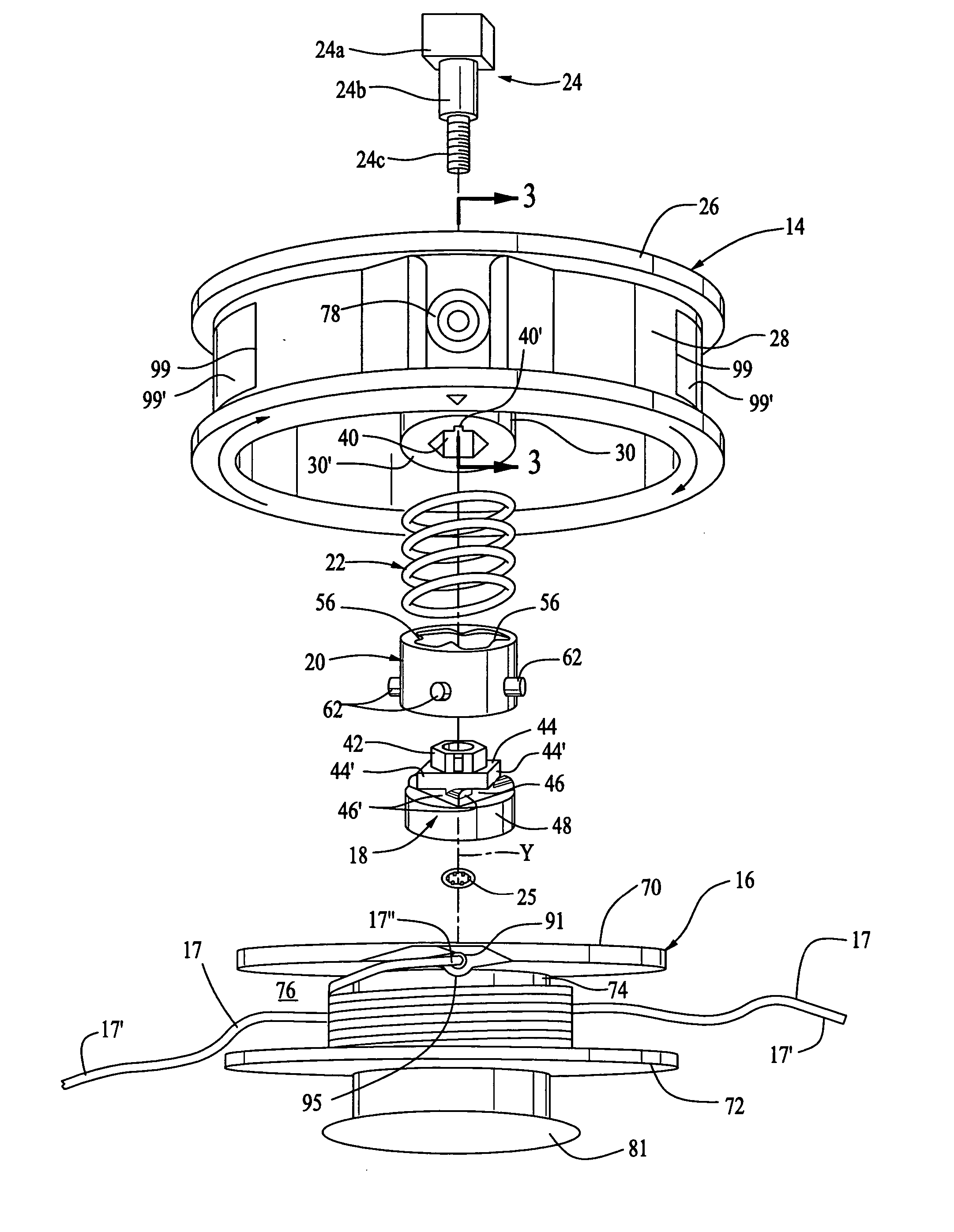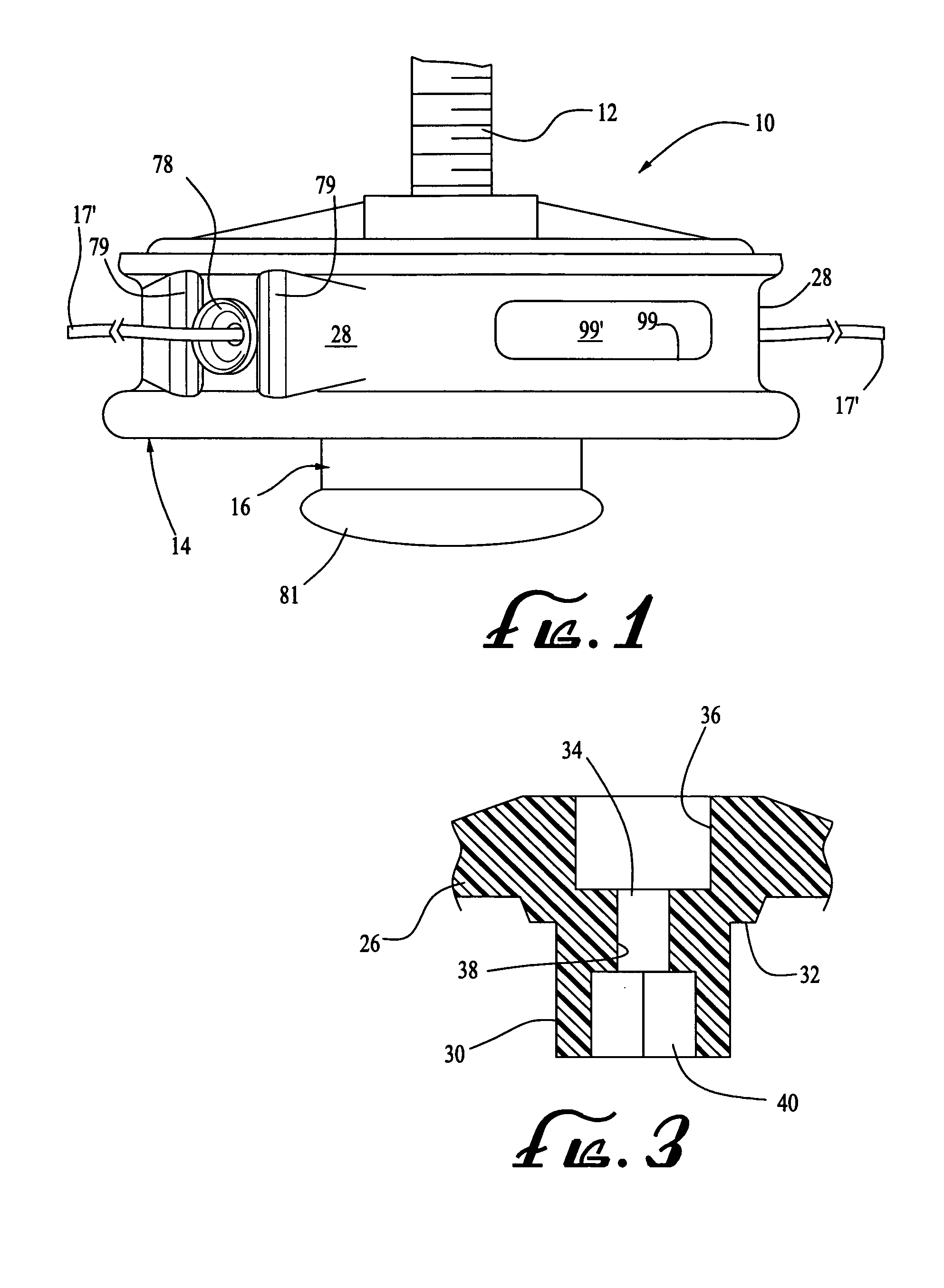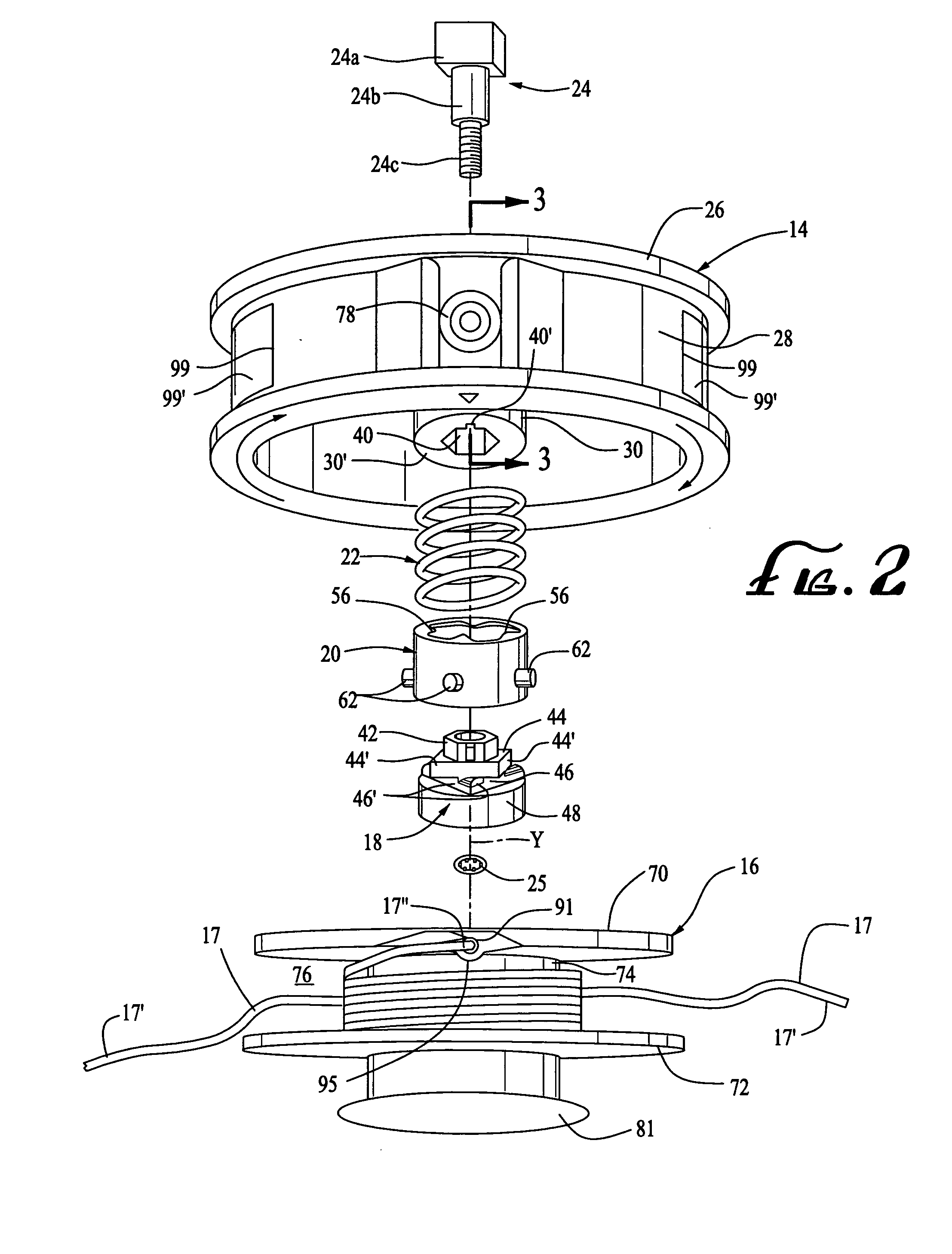Trimmer head for use in flexible line rotary trimmers having improved line loading mechanism
a technology of flexible line rotary trimmer and trimmer head, which is applied in the field of improved trimmer head, can solve the problems of no longer ensuring positive engagement, time-consuming task for professional users, and difficulty in properly loading the line on the spool, so as to facilitate line loading, facilitate the loading of the head with cutting lines, and easily orient the spool
- Summary
- Abstract
- Description
- Claims
- Application Information
AI Technical Summary
Benefits of technology
Problems solved by technology
Method used
Image
Examples
first embodiment
[0066] Referring now in detail to the drawings, a bump-feed type trimmer head 10 of the present invention is shown in FIG. 1 mounted on the extended end of a rotatable drive shaft 12 on a gasoline or electric powered rotary trimmer (not shown). The trimmer head 10 generally comprises a housing 14, a spool 16 for carrying one or more lengths of coiled monofilament nylon cutting line 17, a cam member 18, a cam follower 20, a coil spring 22, a drive bolt 24 and a retaining nut 25. The trimmer housing 14 is preferably formed by injection molding a nylon 6 copolymer and defines a circular upper wall 26, a cylindrical depending skirt 28 and a centrally disposed tubular extension 30 depending from upper housing surface 26 into the interior of the housing about the central axis of rotation “Y” of the head. The tubular extension 30 in the trimmer head housing 14 defines an annular outer shoulder 32 for coil spring 22 and an axial channel 34 through which the drive bolt 24 extends. Channel 34...
second embodiment
[0096] the present invention is illustrated in FIGS. 20-31 wherein the line loading mechanism is employed in a manual trimmer head 100. Head 100 is also mounted on the extended end of a rotatable drive shaft on a gasoline or electric powered rotary trimmer. The trimmer head 100 generally comprises a housing 114, a spool 116 for carrying one or more lengths of coiled monofilament nylon cutting line 17, a coil spring 122, drive bolt 124 and a wing nut 125 for securing the spool 116 to the trimmer head housing 114.
[0097] The trimmer housing and spool are preferably formed of the same material as the corresponding components of the prior embodiment. The housing 114 defines an upper circular wall 126, a cylindrical skirt 128 depending therefrom and a centrally disposed tubular extension 130. Extension 130 is axially aligned with the central axis of rotation “Y” of the head and includes a depending portion 130a and an upwardly projecting portion 130b. The tubular extension 130 is configur...
PUM
 Login to View More
Login to View More Abstract
Description
Claims
Application Information
 Login to View More
Login to View More - R&D
- Intellectual Property
- Life Sciences
- Materials
- Tech Scout
- Unparalleled Data Quality
- Higher Quality Content
- 60% Fewer Hallucinations
Browse by: Latest US Patents, China's latest patents, Technical Efficacy Thesaurus, Application Domain, Technology Topic, Popular Technical Reports.
© 2025 PatSnap. All rights reserved.Legal|Privacy policy|Modern Slavery Act Transparency Statement|Sitemap|About US| Contact US: help@patsnap.com



